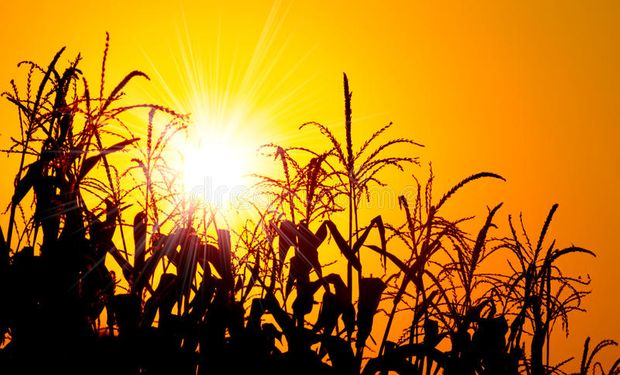08ofJanuaryof2021at08:14
–
The Rosario Stock Exchange, through the Strategic Guide for Agriculture, issued a red alert for early corn in the core region.
“We estimate yields of 50 to 60 qq / ha as floor and around 80 qq / ha in the best cases and if it rains a week from now, “they warn in Pergamino.
In the core zone, rising temperatures and a significant increase in humidity will cause unstable conditions, with the probable development of rains and storms of varying intensity over the region.
“The storm system in the southeast of Buenos Aires removes the possibility of water contributions in the center of the Pampas region,” says José Luis Aiello, Dr. in Cs. Atmospheric.
–
65% of the core region is in drought at the time that early corn defines the yield: “The rains of the first 6 days of January only reached more than 30 mm south of Córdoba. That is the only zone in the area nucleus that is shown with adequate reserves. The rest continues to dry out and 65% of the area is with the highest degree of drought “.
It deals with a large part of the center and south of Santa Fe, west of Córdoba and north of Buenos Aires. There is 400,000 ha that are in fair to poor condition, 30% of the early corn planted in the region. At this time, 75% of the area is in the early stages of grain filling, 23% in bloom and the rest in panicle. Beyond the enormous differences between batches due to soil, fertilization, sowing dates and the extra millimeters that some areas have received, the technicians agree that the problem is filling. The water was enough to sustain a good flowering but now the soils do not have more reserves in the drought affected areas.
“The corn is well pomegranated, with cute spike sizes, but with serious filling problems. 10 days ago they began to remobilize nitrogen from the first 3 or 4 leaves that are now dry. In other fields sown later, the beans are freshly set and are much more complicated ”. Everyone agrees that next week’s rains will be crucial for the crop.
How is the corn in the different areas?
The BCR reviews that in the central south of Santa Fe, there is a privileged area that surrounds Carlos Pellegrini, El Trébol, and Classon. There, the crops are without signs of stress and normal yields are estimated. Towards Cañada de Gómez “the reserves for filling are very fair to scarce in all the lots” and they need close to 100 mm in order not to lose potential.
–
On the other hand, there are areas like Cañada Rosquín in which they point out that “the variation in the expectation of yield that the corn had in so few days is incredible. In lots of lower quality of soil and / or management, there are spotted corn with little possibility of reverting the situation ”. In Pergamino, the outlook for cultivation is very complicated: “the crop is severely damaged. We estimate yields of 50 to 60 qq / ha as a floor and around 80 qq / ha in the best cases and if it rains within a week ”, they warn.
In Córdoba, areas with excellent corn yields and with the influence of water sources, such as Corral de Bustos, say that corn “is already cutting its yield. In the best batches, where 130 qq / ha was expected at the beginning, a drop of 20% is not ruled out and it will be more if this situation of scarcity is accentuated ”.
Soy: fight to close the furrow
“Petisita already 35 (cm) does not close the gap”, the technicians begin to be heard saying. Limited in growth, soybeans also need the return of the rains. The early soybeans in the core region are between the end of the vegetative stage and the beginning of flowering. In this part of the cycle, the crop is expected to close the furrow to take advantage of all solar radiation. But the rains do not come and the stored water is not enough.
The engineers warn that by sectors the oilseed begins to show symptoms of thermo-hydric stress such as stunting and loss of leaves. Between 10 to 20 days, depending on the area, soybeans enter the yield definition period and if there are no significant rains in the next 10 days, the potential yield will be compromised. In second-class soybeans, regular batches in poor condition begin to be observed due to the lack of water: “there are batches compromised by the loss of plants,” they comment in General Pinto.
—


